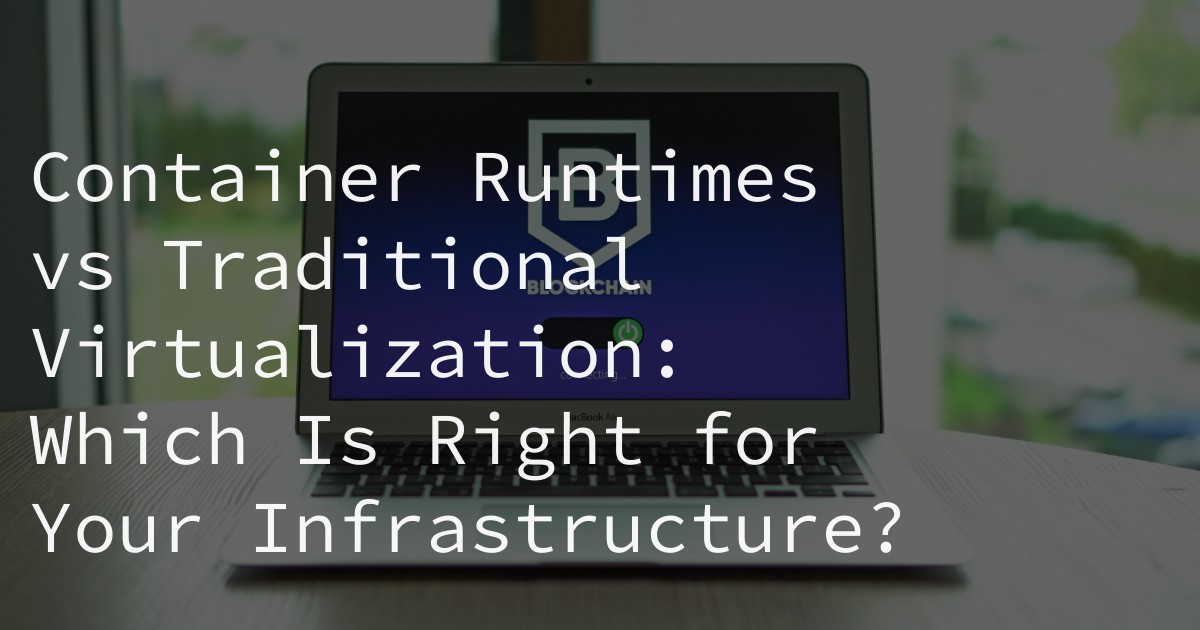
04 Nov Container Runtimes vs Traditional Virtualization: Which Is Right for Your Infrastructure?
Container runtimes and traditional virtualization are two popular methods for managing and deploying applications and services in a computing environment. As a SEO and Cloud Computing expert, I have extensive knowledge of both container runtimes and traditional virtualization and their impact on businesses. In this article, we will explore the differences between these two approaches and help you determine which one is right for your infrastructure. By the end of this article, you will have a comprehensive understanding of container runtimes and traditional virtualization, as well as the factors to consider when choosing between them.
Understanding Container Runtimes and Traditional Virtualization
Before we dive into the comparison, let’s define what container runtimes and traditional virtualization are.
Container Runtimes
Container runtimes, also known as container engines, are software tools that allow for the creation, deployment, and management of containers. Containers are lightweight, standalone packages that contain all the necessary components to run an application, including code, libraries, and dependencies. Popular container runtimes include Docker and Kubernetes.
One of the key advantages of container runtimes is their ability to isolate applications and services from the underlying infrastructure, making them portable and easily deployable across different environments. However, this also means that containers share resources with the host system, which can lead to performance issues if not managed properly.
Traditional Virtualization
Traditional virtualization, on the other hand, involves creating virtual machines (VMs) that mimic physical hardware and run multiple operating systems and applications on a single physical server. Popular virtualization platforms include VMware and Hyper-V.
Unlike containers, virtual machines have their own operating system and resources, making them more isolated and secure. However, this also means that they are heavier and require more resources to run, leading to potential resource wastage.
Factors to Consider When Choosing
When deciding between container runtimes and traditional virtualization, it’s important to consider the specific needs and requirements of your business. Here are some key factors to keep in mind:
- Resource utilization and efficiency: Containers are more lightweight and efficient, making them a better option for applications with lower resource requirements. Virtual machines, on the other hand, are better suited for resource-intensive workloads.
- Scalability and flexibility: Containers are highly scalable and can be easily spun up or down as needed, making them ideal for applications with fluctuating demand. Virtual machines, on the other hand, require more resources and time to scale.
- Management and maintenance: Containers are easier to manage and maintain, as they can be easily updated and replaced without affecting other containers. Virtual machines, on the other hand, require more maintenance and updates.
- Cost: Containers are more cost-effective, as they require fewer resources and can be easily scaled. Virtual machines, on the other hand, require more resources and can be costly to maintain.
- Compatibility with existing infrastructure and applications: Containers are more compatible with existing infrastructure and applications, as they can run on any operating system. Virtual machines, on the other hand, may require specific hardware and software.
Use Cases for Container Runtimes
Container runtimes are ideal for certain use cases, including:
- Microservices architecture: Containers are a great fit for microservices, as they allow for easy deployment and management of individual services.
- Development and testing environments: Containers can be easily spun up and down, making them ideal for development and testing environments.
- Cloud-native applications: Containers are a key component of cloud-native applications, as they enable portability and scalability.
- Continuous integration and deployment (CI/CD) pipelines: Containers are often used in CI/CD pipelines to streamline the development and deployment process.
- DevOps/DevSecOps workflows: Containers are a key tool for DevOps and DevSecOps teams, as they enable collaboration and automation.
Use Cases for Traditional Virtualization
Traditional virtualization is better suited for certain use cases, including:
- Legacy applications: Virtual machines are a better fit for legacy applications that may not be compatible with container technology.
- Resource-intensive workloads: Virtual machines are better equipped to handle resource-intensive workloads, such as databases and analytics.
- Security and isolation requirements: Virtual machines provide more isolation and security, making them a better option for sensitive applications and data.
- Compliance regulations: Virtual machines are often used to meet compliance regulations, as they provide more control and isolation.
- Disaster recovery and backup solutions: Virtual machines can be easily backed up and restored, making them a good option for disaster recovery.
Conclusion
In conclusion, both container runtimes and traditional virtualization have their own strengths and weaknesses, and the right choice depends on the specific needs and requirements of your business. It’s important to regularly evaluate and adjust your infrastructure to meet the evolving needs of your business. By understanding the differences between container runtimes and traditional virtualization, and considering the factors outlined in this article, you can make an informed decision for your infrastructure.
RELATED ARTICLES:



Sorry, the comment form is closed at this time.